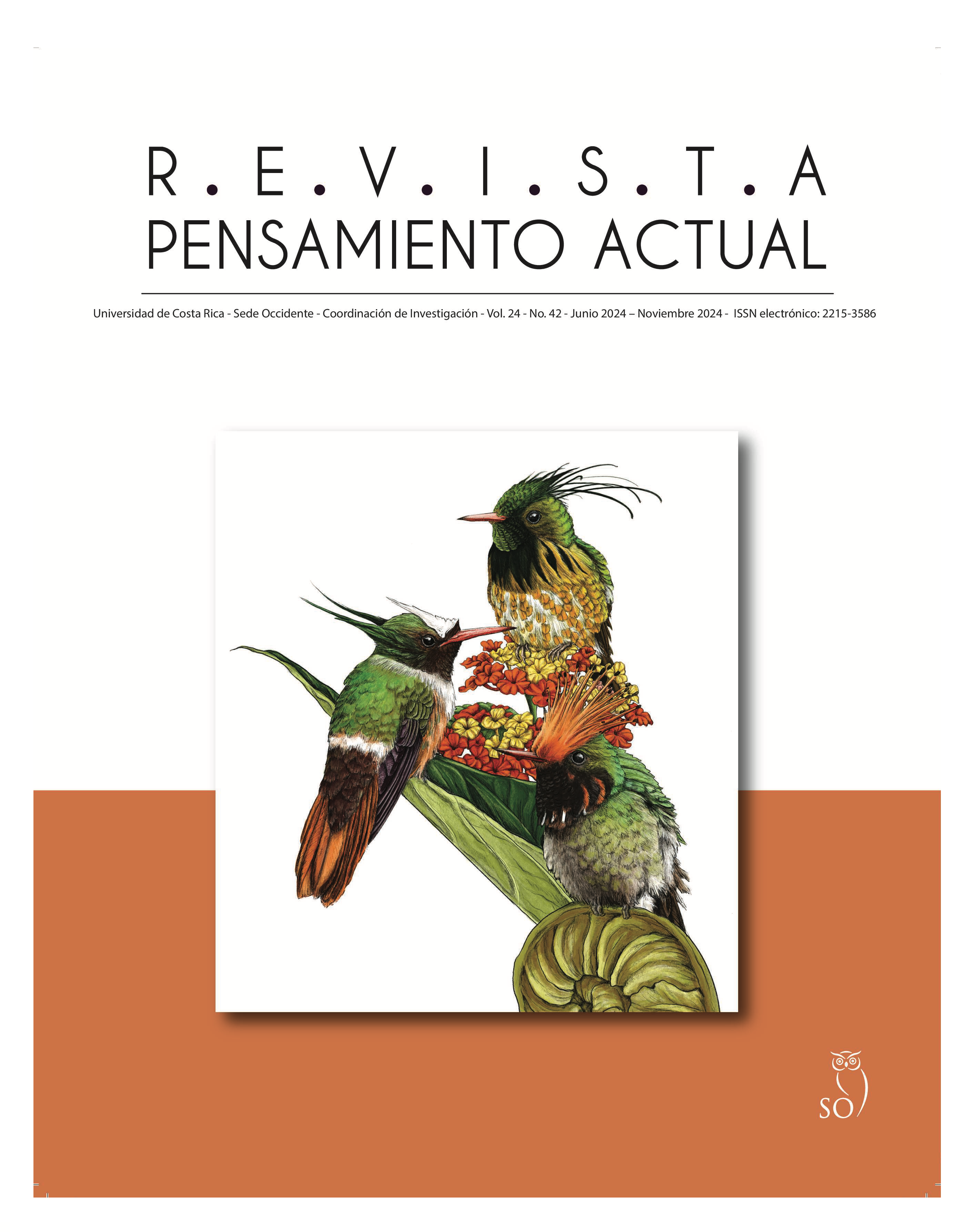Abstract
The protected areas are one of the main conservation strategies for biodiversity and ecosystem services. The classification of protected areas into management categories of the International Union for Conservation of Nature (IUCN) constitutes an international framework of reference. This classification is recognized by the Convention on Biological Diversity and seeks to categorize the different management methods applicable to protected areas. The classification contributes to the global standardization of protected areas in accordance with their management objectives, independent of the nomenclature of each country. The Network of Protected Areas of the University of Costa Rica is a multidisciplinary unit, currently dedicated to the protection of 15 areas (8,055 hectares) with diverse natural resources, owned or co-managed by the University. These areas contribute to the conservation of biodiversity in the different properties of the University, including campuses throughout the country. Given the need to establish adequate guidelines for the organization and proper management of these areas, we present three internal management categories: University Biological Reserve, University Area of Habitats and Species Management, and University Area of Sustainable Resource Management. These are based on a comparative analysis with the IUCN management categories, according to their creation and conservation objectives, the primary approaches to their management, the distinctive features of each property, and its ecological role in the landscape.
References
Asamblea Legislativa de la República de Costa Rica. (1949). Constitución Política. San José, Costa Rica.
Asamblea Legislativa de la República de Costa Rica. (1991). Ley N°7354. Creación de la Reserva Biológica Alberto Manuel Brenes. Recuperado de http://www.pgrweb.go.cr/scij/Busqueda/Normativa/Normas/nrm_texto_completo.aspx?param1=NRTC&nValor1=1&nValor2=18093&nValor3=19305&strTipM=TC
Asamblea Legislativa de la República de Costa Rica. (1995). Ley Orgánica del Ambiente 7554. San José, Costa Rica. Recuperado de http://www.pgrweb.go.cr/SCIJ/Busqueda/Normativa/Normas/nrm_texto_completo.aspx?param1=NRTC&nValor1=1&nValor2=27738&nValor3=93505&strTipM=TC
Asamblea Legislativa de la República de Costa Rica. (1998). Ley de Biodiversidad 7788. Recuperado de http://www.eefb.ucr.ac.cr
Borrini-Feyerabend, G., Dudley, N., Jaeger, T., Lassen, B., Pathak Broome, N., Philips, A., & Sandwith, T. (2014). Gobernanza de las Áreas Protegidas: de la comprensión a la acción. UICN.
Dudley, N. (Ed.). (2008). Directrices para la aplicación de las categorías de gestión de áreas protegidas. Gland, Suiza: UICN. Recuperado de https://portals.iucn.org/library/efiles/documents/paps-016-es.pdf
Escuela de Biología-RAP. (2020). Plan de manejo del Jardín Botánico José María Orozco. 2021-2026. Universidad de Costa Rica.
Escuela de Biología-RAP. (2021). Plan de manejo de la Estación Biológica Manuel Koss Rubinstein. 2021-2026. Universidad de Costa Rica.
Escuela de Biología-RAP. (2022). Plan de Manejo de la Reserva Ecológica Finca 4. 2022-2026. Universidad de Costa Rica.
Geldmann, J., Manica, A., Burgess, N. D., Coad, L., & Balmford, A. (2019). A global-level assessment of the effectiveness of protected areas at resisting anthropogenic pressures. Proceedings of the National Academy of Sciences, 116(46), 23209–23215. https://doi.org/10.1073/pnas.1908221116
Grupo de Trabajo de la UICN-CMAP sobre OMEC. (2021). Reconocimiento y reporte de otras medidas efectivas de conservación basadas en áreas. Gland, Suiza: UICN.
Harvey, C., Guindon, C., Haber, W., Hamilton, D., & Murray, K. (2007). La importancia de los fragmentos de bosque, los árboles dispersos y las cortinas rompevientos para la biodiversidad local y regional: El caso de Monteverde, Costa Rica. En Evaluación y conservación de biodiversidad en paisajes fragmentados de Mesoamérica. Editorial INBio.
IPBES. (2019). Summary for policymakers of the global assessment report on biodiversity and ecosystem services of the Intergovernmental Science-Policy Platform on Biodiversity and Ecosystem Services (S. Díaz, J. Settele, E. S. Brondízio, H. Ngo, M. Guèze, J. Agard, A. Arneth, P. Balvanera, K. Brauman, S. H. Butchart, K. Chan, L. Garibaldi, K. Ichii, J. Liu, S. M. Subramanian, G. Midgley, P. Miloslavich, Z. Molnár, D. Obura, A. Pfaff, S. Polasky, A. Purvis, J. Razzaque, B. Reyers, R. Roy Chowdhury, Y. J. Shin, I. J. Visseren-Hamakers, K. J. Willis, & C. N. Zayas, Eds.). IPBES secretariat, Bonn, Germany. [Documento en línea]. 56 páginas. https://doi.org/10.5281/zenodo.3553579
Jones, K. R., Venter, O., Fuller, R. A., Allan, J. R., Maxwell, S. L., Negret, P. J., & Watson, J. E. (2018). One-third of global protected land is under intense human pressure. Science, 360(6390), 788–791.
Martínez-Salinas, A., &
##plugins.facebook.comentarios##

This work is licensed under a Creative Commons Attribution-NonCommercial-ShareAlike 3.0 Unported License.
Copyright (c) 2024 Pensamiento Actual


